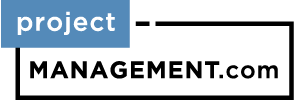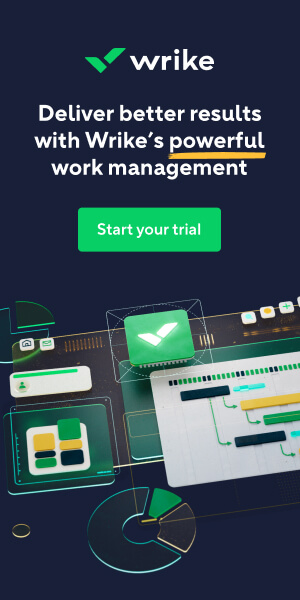Featured Partners: Project Management Software
Every enterprise has to deal with some amount of risk. According to a recent study by PwC, 40% of executives cite cyber risks as their topmost concerns for today, but there are others, too. Talent retention, skyrocketing production costs, supply chain disruptions, and the current rate of inflation all present serious business risks.
From a project manager’s perspective, there are three components of risk management:
- The actual risk, or event, itself
- The likelihood that the event will occur
- The final consequences of the event
Examining the Key Components of Risk
Project management risks can be broken down and separated into one of two categories: internal or external risks. Not only does this make it easier to prioritize and address risks, but it helps your entire team understand the potential consequences.
Understanding internal business risks
Internal business risks affect your organization and, more specifically, your project management team. Although these can be some of the most challenging risks to overcome, they are controllable with an expert project manager at the helm.
Some internal business risks include:
- Operational Risks: These risks usually stem from issues with production, distribution, or procurement. You can minimize these risks by leveraging reliable and efficient supply chains and distribution networks.
- Project Costs: The potential for a project to exceed its forecasted budget is always a risk to consider. For best results, make sure you’re considering all project costs before establishing your budget.
- Talent Acquisition, Recruitment, and Retention: Certain projects might require specialized talent, which may or may not be readily available. As a result, you might need to budget for new talent acquisition, onboarding, and training.
- Scheduling: Most projects need to be completed within a certain timeframe. In most cases, deadlines are missed as a direct result of poor planning.
- Quality: A certain level of quality needs to be maintained at all times, even in the presence of tight deadlines, employee turnover, or poor planning.
As any experienced project manager knows, internal risks aren’t the only consideration. External risks can be just as challenging and, if left unchecked, every bit as harmful to your next project.
Analyzing external risks
External risks represent events you cannot control, including those that affect your clients. While it’s easy to ignore these risks in favor of minimizing and addressing internal challenges, doing so is a risky endeavor in and of itself.
Common external risks include:
- Cyberattacks and Other Cybercrime: Enterprise networks are prime targets for today’s hackers and cyber criminals, but you can minimize the risk by maintaining strict network and data security controls.
- Market Risks: While stable markets pose much less risk than their unpredictable and volatile counterparts, nearly all market conditions have the potential to change overnight.
- Natural Disasters: A natural disaster can strike at any time, and with little to no warning at all. For best results, make sure your business continuity and disaster recovery plans are up-to-date.
- Legal Risks: Legal and regulatory risks can wreak havoc on an otherwise well-planned and successful project. Potential issues can arise from state and federal agencies, business competitors, and even the general public.
- Economic Factors: Take some time to consider economic risks, too, including interest rates, tax policies, international relations, and even the threat of another pandemic.
As a project manager, it’s your duty to mitigate and control all of the components of risk on behalf of your entire team.
Controlling Project Risks
All risks are controllable to an extent. While there are numerous strategies for project managers to use, most organizations use a risk management framework (RMF) to address the most common concerns.
Some industries already maintain their own, standardized RMF, like that of the NIST (National Institute of Science and Technology) RMF or the COBIT (Control Objectives for Information and Related Technology) RMF.
In other industries, individual organizations are free to create their own RMFs. However, it’s important to keep in mind the five components of risk management framework in general.
What are the components of the risk management framework?
There are five components of enterprise risk management, including:
- Risk Identification: Identifying specific risks allows you to prioritize, classify, and categorize risks appropriately.
- Risk Assessment and Measurement: By considering factors like risk exposure and the potential for loss, your team can come up with a standardized risk measurement.
- Risk Mitigation and Control: Categorizing and measuring risks makes it easier to eliminate, minimize, and control risks.
- Risk Reporting and Ongoing Monitoring: Keep your team up to date on the latest risks through continuous risk reporting and day-to-day monitoring.
- Risk Governance: Clarify team roles and ensure everyone performs their duties through risk governance.
Not only will a thorough RMF help you control business risks, but it will also help you minimize those risks that cannot be controlled.
Minimizing Your Risks
The most successful project managers understand how to minimize risks before beginning a new project. Some common strategies include:
- Identifying Risks Worth Taking: Some rewards are so great that they’re worth the risk. Perfect that art of identifying these risks, and avoid any risks that simply aren’t worth it.
- Maintaining an Active Insurance Policy: Insurance can help cover many of your business risks, particularly those affecting your physical property and employees.
- Diversifying Your Portfolio of s or Services: You can mitigate or offset some of your business risks by offering new products or services. These can be add-ons to your current offerings or brand new solutions altogether.
- Keeping Detailed Records: Diligent recordkeeping is just as important in the digital age as it was in years past. Not only can these records be used as called upon, including during legal cases, but they can often be used to extract business intelligence and other actionable insights.
- Utilizing Risk Management Software: Modern technology provides some of the best tools for minimizing business and project risks. Today’s solutions come in all sizes and include all manner of features, so you’ll want to do some research before deciding on the software that’s right for you, your project, and your enterprise.
But, that’s just the start of your risk management responsibilities. Since every project has its own, unique risks to overcome, a successful project manager has to create their own strategies for minimizing and overcoming that risk.
Risk Management for Project Managers
Project and risk management go hand-in-hand. Not only do you need to pay attention to your project-specific risks and those that directly affect your team, but you’ll need to consider organizational risks and client risks, too. It’s a delicate balancing act that is only achievable through hands-on experience, professional diligence, and a genuine passion for team leadership.
Project Management Tools to Help Manage Risk
Businesses can assess and manage risks using project management software: in fact, it’s probably one of the most helpful ways to do so. These tools have charts and features for planning projects and analyzing risks, allowing team members to access details they need to successfully manage risk. The ten listed below are some of the best project management tools.













